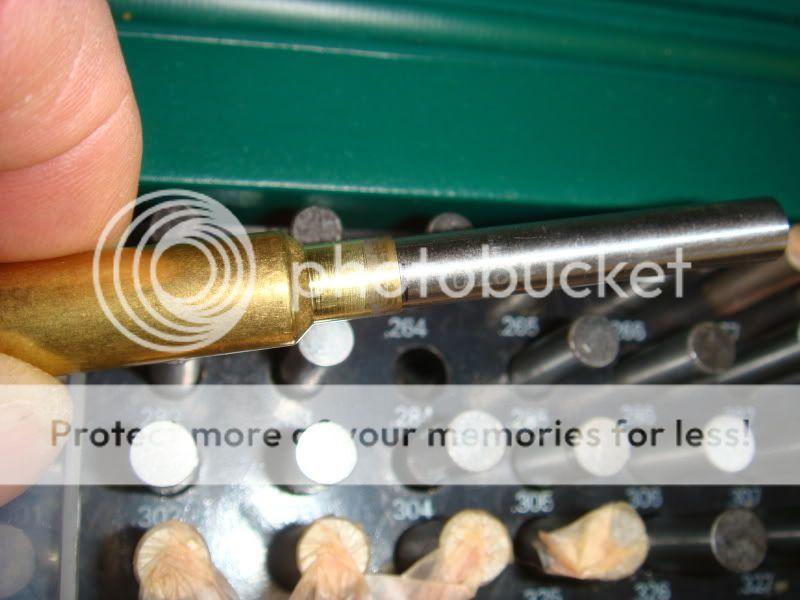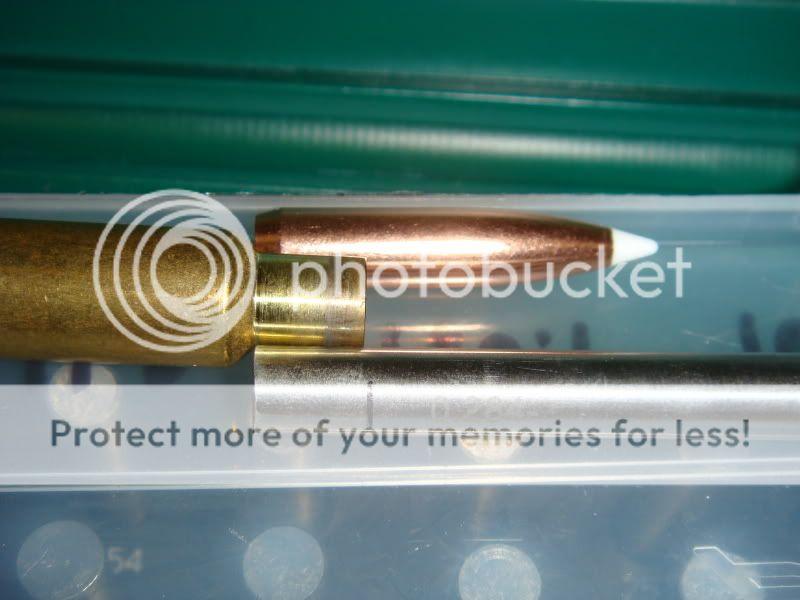SBruce
Well-Known Member
The "donut" is a wierd thing. I am frankly a little confused by that theory. If I am understanding correctly, it is a smaller ID right at the neck/shoulder junction.??
Some are saying that it can be created when necking down brass to smaller caliber.
I also heard that the donut is created when necking up brass, which would make more sense (to me anyway). Makes sense that the neck shoulder junction wouldn't want to expand fully or as easily as the neck itself does, and therefore would be a smaller ID once the neck up, or expanding, has been done.
I am failing to visualize how necking down would create a smaller ID at the shoulder junction (based on the same logic of that portion not wanting to move as easily).................Only way this makes sense in my mind is if the necking down was done too small and/or too deep, and then the neck/shoulder portion not fully expanding to the chamber when fired. Seems to me that the case will expand, so long as we're not using a bare minimum or "down loaded" charge?
FWIW, when necking down, I just neck size partially with a neck die (not the full length of the neck) and seat bullets and fire. They chamber just a little snug, because there is now a "false shoulder" where the neck die stopped sizing down, but it's only snug for that first fireing (unless it's a really warm load). I don't recall anyone talking about "donuts" 20 years ago, when I was shooting and forming cases for Benchrest.
I'd like to hear other opinions and logical arguments/reasoning please.
Some are saying that it can be created when necking down brass to smaller caliber.
I also heard that the donut is created when necking up brass, which would make more sense (to me anyway). Makes sense that the neck shoulder junction wouldn't want to expand fully or as easily as the neck itself does, and therefore would be a smaller ID once the neck up, or expanding, has been done.
I am failing to visualize how necking down would create a smaller ID at the shoulder junction (based on the same logic of that portion not wanting to move as easily).................Only way this makes sense in my mind is if the necking down was done too small and/or too deep, and then the neck/shoulder portion not fully expanding to the chamber when fired. Seems to me that the case will expand, so long as we're not using a bare minimum or "down loaded" charge?
FWIW, when necking down, I just neck size partially with a neck die (not the full length of the neck) and seat bullets and fire. They chamber just a little snug, because there is now a "false shoulder" where the neck die stopped sizing down, but it's only snug for that first fireing (unless it's a really warm load). I don't recall anyone talking about "donuts" 20 years ago, when I was shooting and forming cases for Benchrest.
I'd like to hear other opinions and logical arguments/reasoning please.


